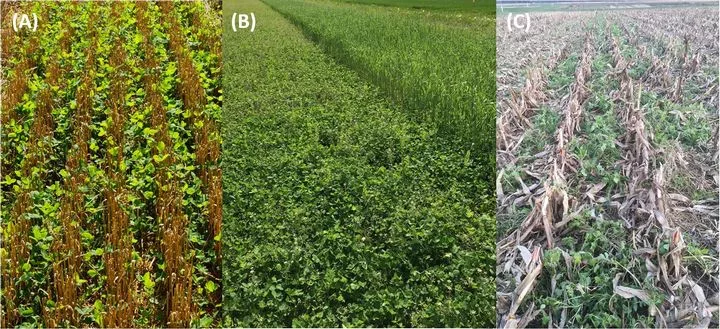By Christy Sprague, Michigan State University Extension weed specialist
Pictured Above: (A) Frost-seeded red clover in wheat stubble, (B) crimson clover and cereal rye seeded after soybean harvest and soil-applied herbicides, and (C) radish interseeded into corn. Photos by Christy Sprague, MSU.
Cover crops provide several benefits, including weed control, protecting soil from erosion and promoting soil health. When adopting this practice, farmers face several challenges, such as competition from weeds impacting the productivity of cover crops or even the cash crops themselves. For this reason, it is very important that weeds are controlled using herbicides, even when using cover crops.
To effectively control weeds when integrating cover crops into crop rotations, farmers need information on which chemicals can safely be used alongside the cover crop species they are using. Because cover crops are incompatible with certain herbicides, research is needed to make sure we do not control the cover crop along with the weeds.
In this new video, Michigan State University Extension specialist Christy Sprague addresses the question: When planting cover crops, which herbicides can I use?
For more information on this project see the “Herbicide Options for Cover Crops Interseeded in Corn” guide. Cover crop information and resources are available through Michigan State University Extension’s Cover Crops page and the Midwest Cover Crops Council.
This work is supported by the Crop Protection and Pest Management Program 2017-70006-27175 from the USDA National Institute of Food and Agriculture, MSU PROJECT GREEEN, and the Michigan Wheat Program. Any opinions, findings, conclusions or recommendations expressed in this publication are those of the author(s) and do not necessarily reflect the view of the U.S. Department of Agriculture.






